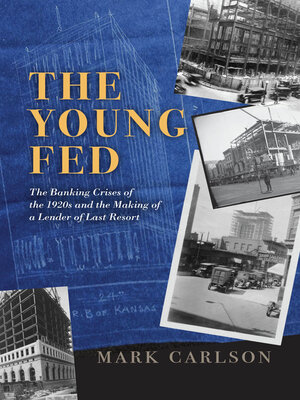The Young Fed
ebook ∣ The Banking Crises of the 1920s and the Making of a Lender of Last Resort · Markets and Governments in Economic History
By Mark Carlson

Sign up to save your library
With an OverDrive account, you can save your favorite libraries for at-a-glance information about availability. Find out more about OverDrive accounts.
Find this title in Libby, the library reading app by OverDrive.



Search for a digital library with this title
Title found at these libraries:
| Library Name | Distance |
|---|---|
| Loading... |
A new history of crisis responses in the central bank's formative years.
The long-standing description of the Federal Reserve as a "lender of last resort" refers to the central bank's emergency liquidity provision for financial entities in periods of crisis. As Mark Carlson shows, this function was foundational to how the Fed was designed but has, at times, proven challenging to implement. The Young Fed examines the origins of the Federal Reserve's emergency liquidity provision which, along with the setting of monetary policy, has become a critical responsibility.
Focusing on the Fed's response to the financial crises of the 1920s, Carlson documents the formative deliberations of central bank policymakers regarding how to assist banks experiencing distress; the lessons that were learned; and how those lessons shaped subsequent policies. Carlson depicts an early Fed that experimented with a variety of approaches to crises, ranging from bold spectacles featuring cash-filled armored cars to behind-the-scenes interventions to prevent inducing panics or bank runs. The Young Fed weaves previously unpublished material from the Fed archives into a watershed work in American economic history: a deeply sourced account of how the world's most important central bank became a lender of last resort.







